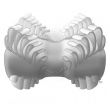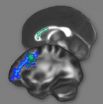(Press-News.org) (Edmonton) Preschoolers from low-income neighbourhoods and kids who spend more than two hours a day in front of a TV or video-game console have at least one thing in common: a thirst for sugary soda and juice, according to research from the University of Alberta.
Researchers from the faculties of Physical Education and Recreation, School of Public Health and Medicine & Dentistry surveyed parents to assess the dietary habits of 1,800 preschoolers in the Edmonton region as part of a larger study on diet, physical activity and obesity.
Researchers found that 54.5 per cent of four- and five-year-olds from poorer neighbourhoods drank at least one soda per week—far more than the 40.8 per cent of kids from higher socioeconomic backgrounds. Preschoolers from low-income areas also drank less milk and consumed more fruit juice, which, like soda, is linked to rising sugar intake associated with childhood obesity.
"When you're looking at that age group, and such a large percentage of very young kids in the study are consuming a large amount of soda, it's quite concerning," said study co-author Kate Storey, a registered dietitian and assistant professor in the School of Public Health.
"If you're drinking a lot of soda and fruit juice, that can displace consumption of water and milk, which are important not just for quenching thirst, but for developing healthy bones and teeth, and health and wellness in general."
The study, part of a larger project looking at nutritional habits of preschoolers, is among the first to gather data on children of such an early age.
Screen time and sugar
Researchers found similar drinking habits among preschoolers who spent more than two hours of "screen time" per day—watching TV or playing video games. Kids from poorer neighbourhoods sat in front of screens more often, and drank larger volumes of sweetened beverages.
"Dietary behaviour and intake patterns are influenced heavily by what happens in the first few years with children, and they maintain those patterns throughout childhood and into adolescence," said study co-author John C. Spence, associate dean of research in the Faculty of Physical Education and Recreation.
"In addition to basic health education, this study identifies a need in how we're dealing with poverty and recognizing there's more to poverty than simply the number of dollars people have. Many families live in places that might not be very healthy for them and, as a result, they make unhealthy food choices."
A companion study involving the same group of preschoolers also looked at the types of foods they ate and whether they followed recommendations in Canada's Food Guide.
Researchers found that just 30 per cent of children ate enough fruits and vegetables, and 23.5 per cent consumed the recommended amount of servings of grain products. The same problem did not exist with milk and meat or alternatives—a respective 91 per cent and 94 per cent of kids ate recommended servings.
Poor neighbourhood, poor food choices
As with sweetened beverages, children from low- and medium-income neighbourhoods were more likely than kids in high-income areas to eat foods like potato chips, fries, candies and chocolate.
Those results presented an "alarming pattern," said Spence, who suggests it is possible families are choosing high-calorie foods because they are cheap and convenient. But, he added, the neighbourhood itself could also be a factor in food choices.
"There are cities in North America where, literally, you have food deserts. If you wanted to go out and buy some lettuce and tomatoes, you'd have to travel very far—very likely without a car. You're not going to do that every time you want to get some food, so maybe you're going to resort to the convenience store down the road."
At least one glimmer of hope is that children who attended daycare or kindergarten were significantly less likely to reach for junk. Storey said that illustrates how education can make a difference and lead to healthier eating habits, regardless of what's happening at home.
"You can start making a difference in different places. It calls for action in multiple settings, schools and communities, for example. That light-bulb moment can happen in a variety of places."
###The studies were published in the August issue of Public Health Nutrition and the summer edition of the Canadian Journal of Dietetic Practice and Research.
The research was funded by the Heart and Stroke Foundation of Canada and Canadian Institutes of Health Research.
Income, 'screen time' affect soda, junk food consumption
2012-08-22
ELSE PRESS RELEASES FROM THIS DATE:
Likely voters say president's 'first 100 days in office' should include plans for research
2012-08-22
WASHINGTON—August 22, 2012— On the eve of the political conventions, nearly two-thirds of likely voters say the next president should announce initiatives promoting medical progress during his "first 100 days in office," according to a new national public opinion poll commissioned by Research!America. And nearly three-quarters of those polled say it's important for candidates for the presidency and Congress to have a science advisor. The findings reveal deep concerns among voters about the lack of attention candidates and elected officials have assigned to research.
"Research ...
Ames Laboratory scientists crack long-standing chemistry mystery
2012-08-22
A team of researchers at the U.S. Department of Energy's (DOE's) Ames Laboratory has answered a key question concerning the widely-used Fenton reaction – important in wastewater treatment to destroy hazardous organic chemicals and decontaminate bacterial pathogens and in industrial chemical production. The naturally occurring reaction was first discovered in 1894 by H.J.H. Fenton, a British chemist at Cambridge, and involves hydrogen peroxide (H2O2) and iron.
How the Fenton reaction actually happens has remained in contention. Scientists have long debated whether it ...
Ancient fossils reveal how the mollusc got its teeth
2012-08-22
TORONTO, ON – The radula sounds like something from a horror movie – a conveyor belt lined with hundreds of rows of interlocking teeth. In fact, radulas are found in the mouths of most molluscs, from the giant squid to the garden snail. Now, a "prototype" radula found in 500-million-year-old fossils studied by University of Toronto graduate student Martin Smith, shows that the earliest radula was not a flesh-rasping terror, but a tool for humbly scooping food from the muddy sea floor.
The Cambrian animals Odontogriphus and Wiwaxia might not have been much to look at ...
UCI microbiologists find new approach to fighting viral illnesses
2012-08-22
Irvine, Calif., Aug. 22, 2012 — By discovering how certain viruses use their host cells to replicate, UC Irvine microbiologists have identified a new approach to the development of universal treatments for viral illnesses such as meningitis, encephalitis, hepatitis and possibly the common cold.
The UCI researchers, working with Dutch colleagues, found that certain RNA viruses hijack a key DNA repair activity of human cells to produce the genetic material necessary for them to multiply.
For many years, scientists have known that viruses rely on functions provided by ...
Australian general practitioners in training spend less time with peds patients than with adults
2012-08-22
Ann Arbor, Mich. — Australian doctors-in-training spend significantly less time consulting with pediatric patients than they do with adults, according to a new study published in the journal Australian Family Physician.
The study found that the proportion of longer consultations – more than 20 minutes -- for children was significantly less than that for adults and seniors among general practice registrars, says Gary Freed, M.D., M.P.H., the lead author on the study and Australian-American health policy fellow, Australian Health Workforce Institute at the University of ...
Close contact with young people at risk of suicide has no effect
2012-08-22
Researchers, doctors and patients tend to agree that during the high-risk period after an attempted suicide, the treatment of choice is close contact, follow-up and personal interaction in order to prevent a tragic repeat. Now, however, new research shows that this strategy does not work. These surprising results from Mental Health Services in the Capital Region of Denmark and the University of Copenhagen have just been published in the British Medical Journal.
Researchers from Mental Health Services in the Capital Region of Denmark and the University of Copenhagen have ...
Rewired visual input to sound-processing part of the brain leads to compromised hearing
2012-08-22
ATLANTA – Scientists at Georgia State University have found that the ability to hear is lessened when, as a result of injury, a region of the brain responsible for processing sounds receives both visual and auditory inputs.
Yu-Ting Mao, a former graduate student under Sarah L. Pallas, professor of neuroscience, explored how the brain's ability to change, or neuroplasticity, affected the brain's ability to process sounds when both visual and auditory information is sent to the auditory thalamus.
The study was published in the Journal of Neuroscience.
The auditory thalamus ...
Intense prep for law school admission test alters brain structure
2012-08-22
Intensive preparation for the Law School Admission Test (LSAT) actually changes the microscopic structure of the brain, physically bolstering the connections between areas of the brain important for reasoning, according to neuroscientists at the University of California, Berkeley.
The results suggest that training people in reasoning skills – the main focus of LSAT prep courses – can reinforce the brain's circuits involved in thinking and reasoning and could even up people's IQ scores.
"The fact that performance on the LSAT can be improved with practice is not new. ...
Study shows long-term effects of radiation in pediatric cancer patients
2012-08-22
For many pediatric cancer patients, total body irradiation (TBI) is a necessary part of treatment during bone marrow transplant– it's a key component of long term survival. But lengthened survival creates the ability to notice long term effects of radiation as these youngest cancer patients age. A University of Colorado Cancer Center study recently published in the journal Pediatric Blood & Cancer details these late effects of radiation.
"These kids basically lie on a table and truly do get radiation from head to toe. There is a little blocking of the lungs, but nothing ...
New laboratory test assesses how DNA damage affects protein synthesis
2012-08-22
RIVERSIDE, Calif. — Transcription is a cellular process by which genetic information from DNA is copied to messenger RNA for protein production. But anticancer drugs and environmental chemicals can sometimes interrupt this flow of genetic information by causing modifications in DNA.
Chemists at the University of California, Riverside have now developed a test in the lab to examine how such DNA modifications lead to aberrant transcription and ultimately a disruption in protein synthesis.
The chemists report that the method, called "competitive transcription and adduct ...



